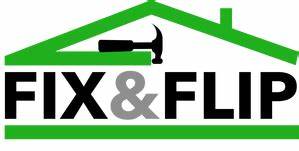House flipping hit a decade high in 2017, with over 207,000 homes flipped, according to CNBC. More and more people are discovering the potential profits that can come with fixing and flipping homes, due in large part to the many related reality television shows. There are plenty of profitable markets ranging from El Paso to San Diego.
But money is usually the biggest obstacle because before you can finish renovating a home and sell it for profit you have to have capital to purchase it. The associated costs can add up quickly, from contractor fees and repairs to listing and broker fees, among many others.
Still it’s not impossible with several types of loans available these days flipping houses, which are known as fix and flip loans.
Properties that Qualify for Fix and Flip Loans
One of the biggest advantages of these loans is their versatility. They can be used on everything from single-family homes to multi-family residences and commercial buildings. However, not all properties qualify. If the dwelling doesn’t need much in the way of renovation or if it’s already been bought and sold multiple times, you may run into obstacles.
Common Conditions for Fix and Flip Loans
A fix and flip loan typically ranges from around $30,000 to over a million. Although payment periods are generally between just six and 12 months, there are many lenders that provide longer term loans that can be useful when there are major repairs to make. The majority of lenders are willing to loan up to 75% of the current property value at varying interest rates with no appraisal fee.
Doing the Math
Overestimating the total cost of repairs and then finding yourself unable to sell the home for more than your loan means that you’re going to lose money. Underestimating often results in the need to take out a personal loan to finish up renovations, which results in paying a higher interest rate and often still ending up in debt. It’s important to do lots of research to avoid miscalculating and understanding that it could be an uphill battle when for borrowing. Those who lend typically do so based on the home’s current property value which isn’t going to help much if you’re hoping to fix it up so that it will sell and earn a profit. Knowing exactly how much you should borrow and why that number is a necessity is essential before approaching lenders.
Lender Considerations
Lenders consider a number of factors when determining whether or not you’re a good candidate for a fix and flip loan, which is quite a bit different than qualifying for a standard mortgage loan. When evaluating a flipper, lenders aren’t usually worried about qualifications like credit scores and debt-to-income ratios. While they may want to see documents like credit reports, bank statements and tax returns, they will consider the experience the applicant has when it comes to this type of project as well as the property’s purchase price, the amount of capital available, the estimated value of the property after repair and the potential cost of renovation.
It’s Not as Easy as It Looks
While those popular TV shows make it seem like flipping homes is easy, it’s more challenging than it appears. You’ll have to find a house to buy that’s at a low enough price, secure a reliable contractor and a fix and flip loan, and then sell that home at a price that going to cover all of your expenses while also providing a big enough profit to make it worth your time and effort.

















